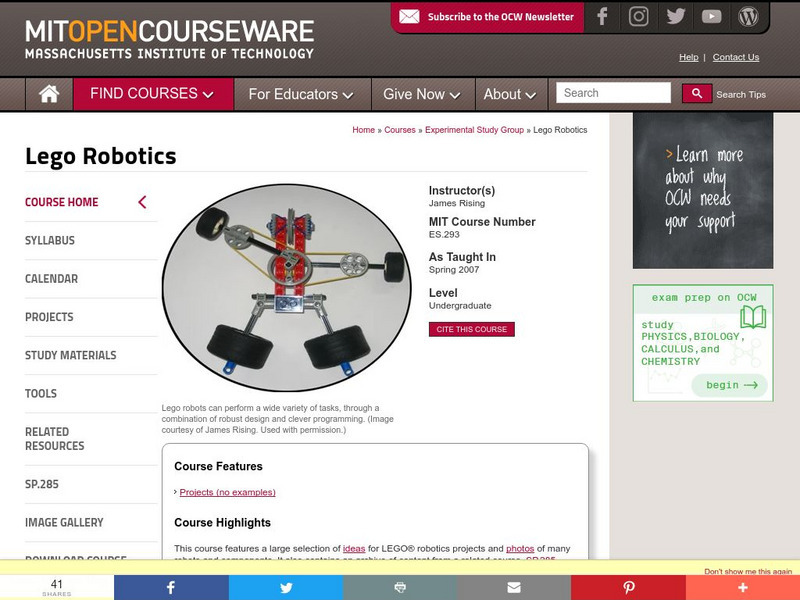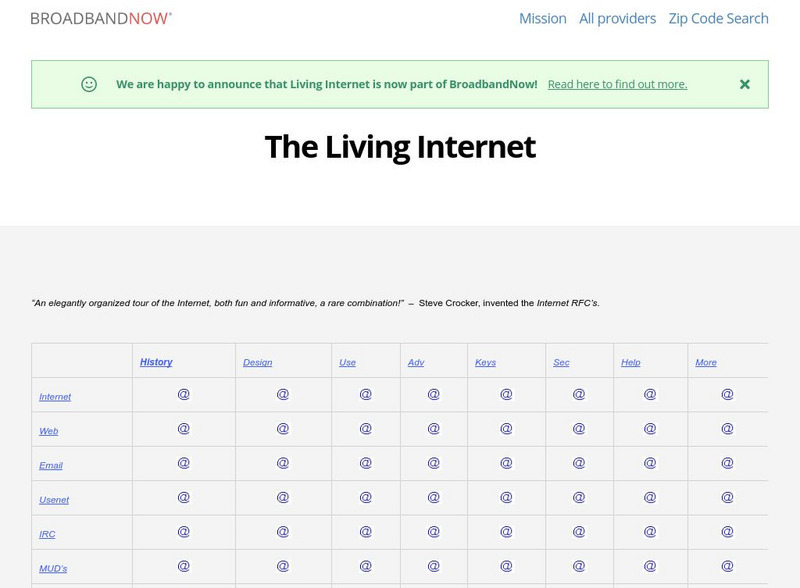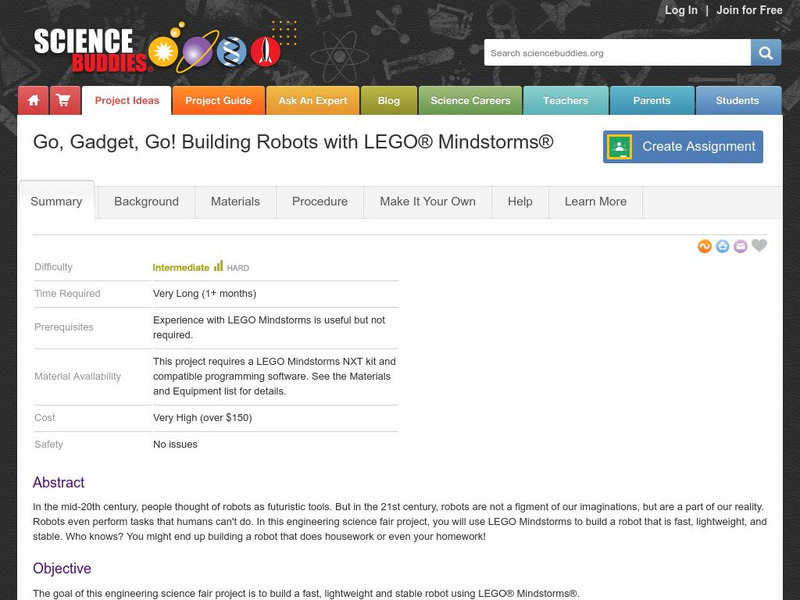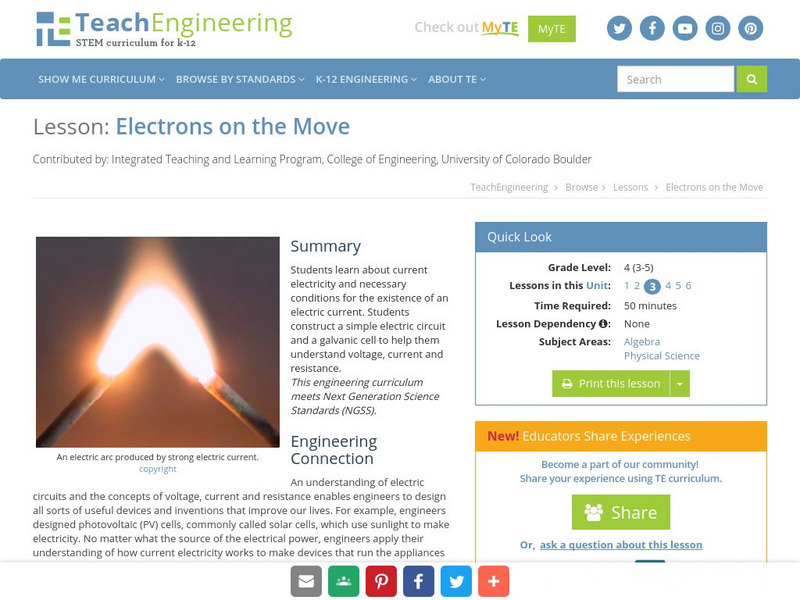TeachEngineering
Teach Engineering: Earth Rocks!
The purpose of this lesson is to introduce students to the basic elements of our Earth's crust: rocks, soils and minerals. They learn how we categorize rocks, soils and minerals and how they are literally the foundation for our...
TeachEngineering
Teach Engineering: Lights Out!
This lesson introduces the concept of electricity by asking students to imagine what their life would be like without electricity. Two main forms of electricity, static and current, are introduced. Students learn that electrons can move...
TeachEngineering
Teach Engineering: Circuits
Students are introduced to several key concepts of electronic circuits. They learn about some of the physics behind circuits, the key components in a circuit and their pervasiveness in our homes and everyday lives. Students learn about...
Science Buddies
Science Buddies: Waste Not, Want Not: Use the Microbial Fuel Cell to Create Elec
Gross. What is that in the toilet? But maybe it's not just gross. Did you know there are bacteria that digest organic waste and create electrons? What if there was a way to collect those electrons to power a circuit? In this science fair...
TeachEngineering
Teach Engineering: Inside the Dna
Students conduct their own research to discover and understand the methods designed by engineers and used by scientists to analyze or validate the molecular structure of DNA, proteins and enzymes, as well as basic information about gel...
TeachEngineering
Teach Engineering: Energy
Through nine lessons, students are introduced to a range of energy types--electrical, light, sound and thermal-as well as the renewable energy sources of wind, hydro (water) and solar power. Subjects range from understanding that the...
TeachEngineering
Teach Engineering: Antimatter Matters
Antimatter, the charge reversed equivalent of matter, has captured the imaginations of science fiction fans for years as a perfectly efficient form of energy. While normal matter consists of atoms with negatively charged electrons...
TeachEngineering
Teach Engineering: What Is a Sensor?
Students gain a rigorous background in the primary human sensors, as preparation for comparing them to some electronic equivalents in the associated activity.
TeachEngineering
Teach Engineering: How Does a Touch Sensor Work?
Students look at human senses and their electronic imitators, with special focus on the skin and touch sensors. They have a chance to handle and get familiar with the LEGO touch sensor, including programming LEGO MINDSTORMS NXT robots to...
TeachEngineering
Teach Engineering: Robot Sensors and Sound
Using microphones connected to computers running Audacity software, student teams experiment with machine-generated sounds and their own voices and observe the resulting sound waves on the screen, helping them to understand that sounds...
Other
Beginner's Guide to Measurement in Electronic and Electrical Engineering [Pdf]
The National Physical Laboratory, which is the UK's National Measurement Institute, offers a Beginner's Guide to Measurements in Electronics and Electrical Engineering. Discusses how electric currents are measured and offers images.
Read Works
Read Works: Heavy Metal
[Free Registration/Login Required] An informational text about problems created by electronic waste being thrown in landfills. A question sheet is available to help students build skills in reading comprehension.
University of Houston
University of Houston: Engines of Our Ingenuity: Fleming's Electric Valve
Provides background information on the Edison Effect and then discusses Fleming's invention.
TryEngineering
Try Engineering: Electric Messages: Then and Now
Lesson investigates electronic communication from the Morse Code system to text messaging. To learn about this, learners construct simple circuits, send messages to each other, and explore the history and impact of communication.
Massachusetts Institute of Technology
Mit: Open Course Ware: Lego Robotics
A robotics curriculum using LEGO robotics that includes projects, tools, and resources. The unit allows students to investigate the use of robotics, mechanical systems, electronics, and programming.
Massachusetts Institute of Technology
Mit: Open Course Ware: Robotics
In this curriculum unit, educators can find lectures and project materials related to electronics including the LEGO robotics.
Other
Broadband Now: The Living Internet
How much do you really know about the Internet? How does it work? Who invented it? The Living Internet has answers to these questions and just about everything else you ever wanted to know about our online world. Sections on: Internet,...
Science Buddies
Science Buddies: Go, Gadget, Go! Building Robots With Lego Mindstorms
In the mid-20th century, people thought of robots as futuristic tools. But in the 21st century, robots are not a figment of our imaginations, but are a part of our reality. Robots even perform tasks that humans can't do. In this...
Other
L Soft: Cata List Catalog of Listserv Lists
This site is the catalog of LISTSERV lists. From this page, you can browse any of the 72,524 public LISTSERV lists on the Internet, search for mailing lists of interest, and get information about LISTSERV host sites. This information is...
Information Fluency
Illinois Mathematics and Science Academy: Accessibility Awareness [Pdf]
Micro-Module covering relevant information on Accessibility Awareness and Section 508, the American Disabilities Act for the Internet. The thorough and informative article addresses applications of Section 508, WC3, website compliance,...
Massachusetts Institute of Technology
Mit: Open Course Ware: Courses: Introduction to Electric Power Systems
College-level electrical engineering course highlighting electric power systems. Course introduces electric power and the conversion of electrical to mechanical energy. Course features include readings, assignments, and quizzes.
TeachEngineering
Teach Engineering: Electrons on the Move
Students learn about current electricity and necessary conditions for the existence of an electric current. Students construct a simple electric circuit and a galvanic cell to help them understand voltage, current and resistance.
Curated OER
Hobby of Electronic Circuit Engineering
This informative site, translated from Japanese to English, identifies electronic parts and has many ideas for electronic projects.
University of Virginia
University of Virginia: Corliss Steam Engine
This essay from the University of Virginia provides an incredible graphic of the Corliss steam engine as shown at the America's Centennial Exposition, held in Philadelphia in 1876. Includes some descriptive text.
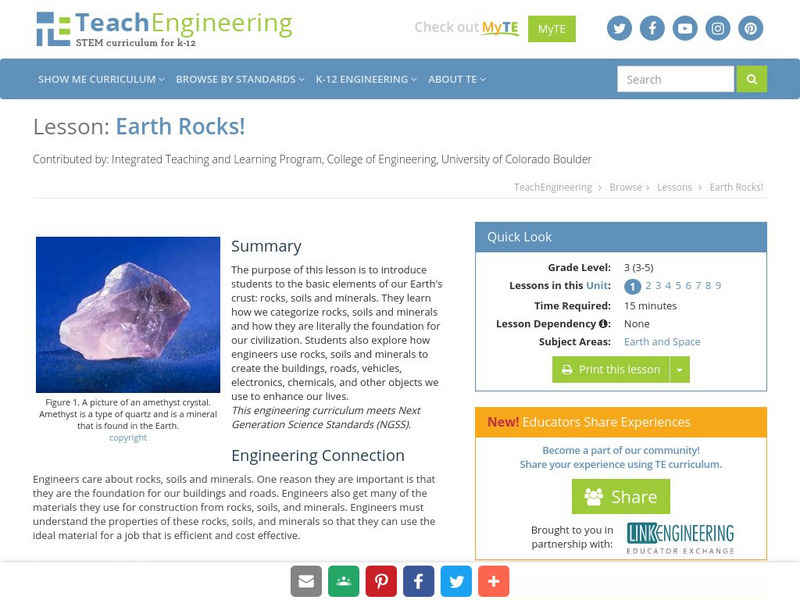

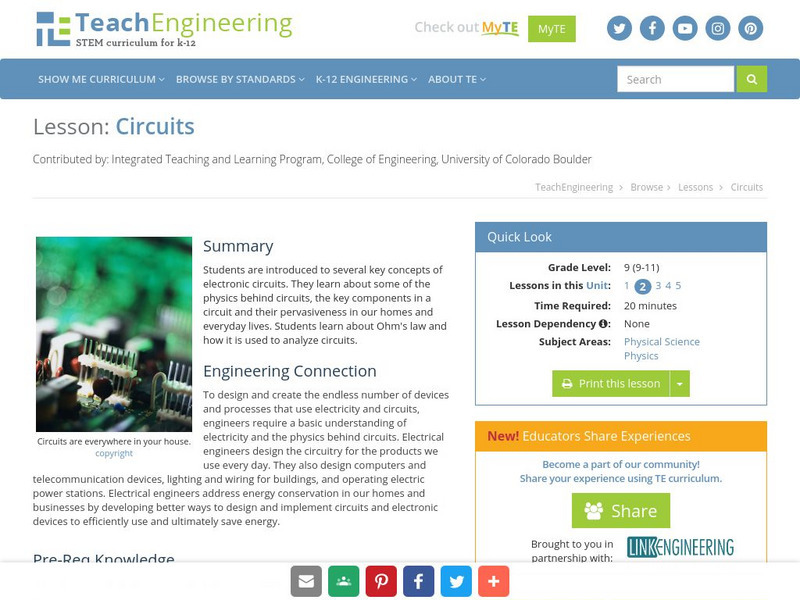

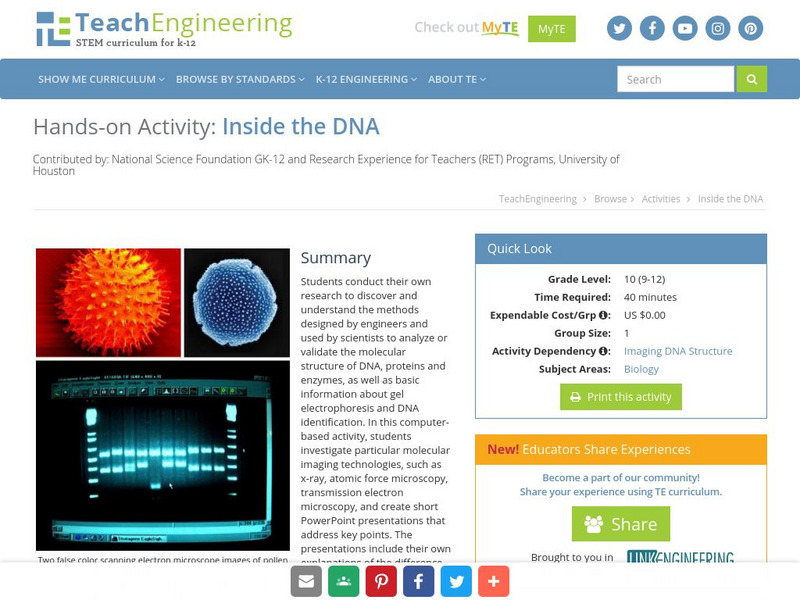





![Beginner's Guide to Measurement in Electronic and Electrical Engineering [Pdf] Handout Beginner's Guide to Measurement in Electronic and Electrical Engineering [Pdf] Handout](https://d15y2dacu3jp90.cloudfront.net/images/attachment_defaults/resource/large/FPO-knovation.png)


